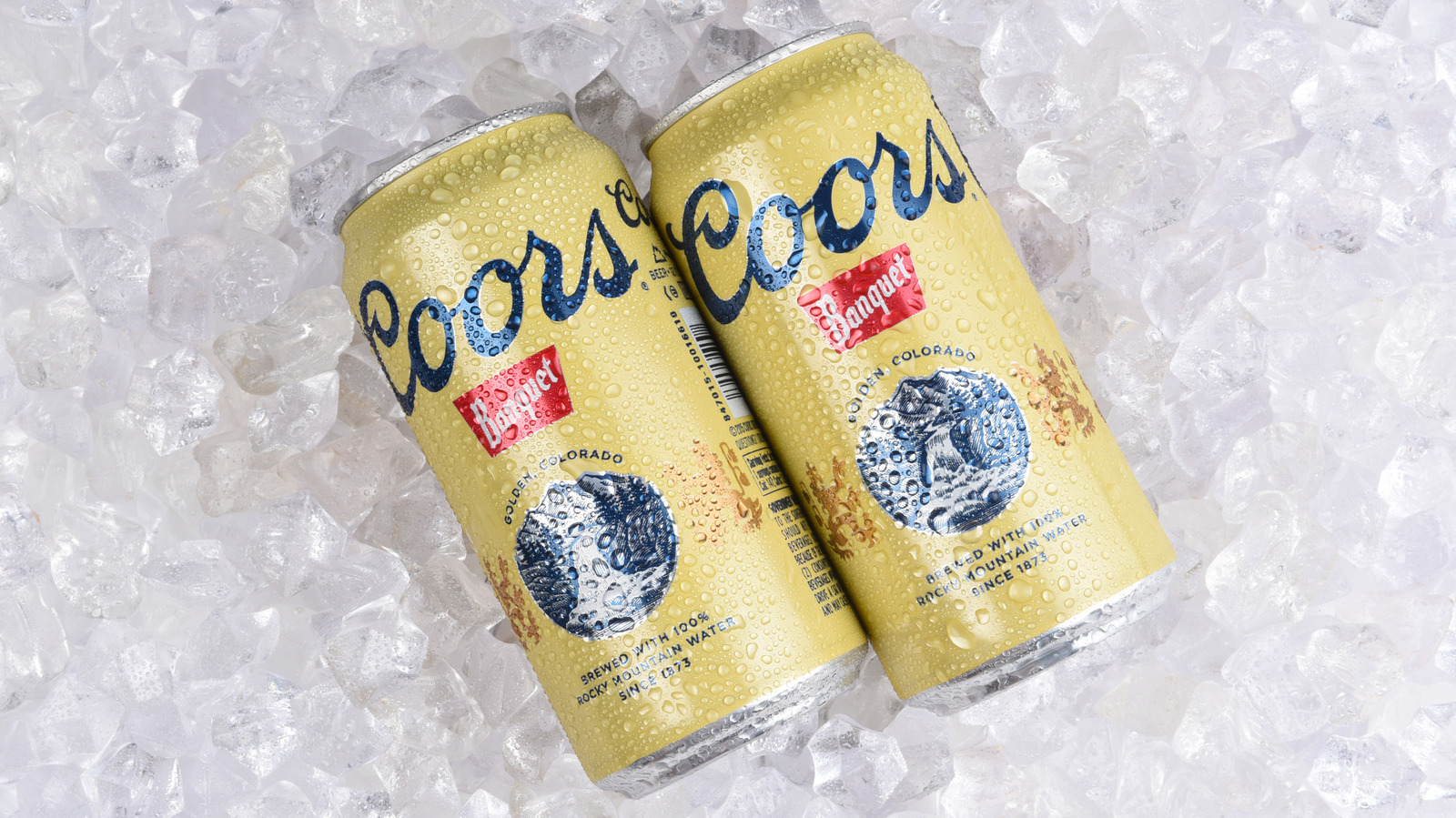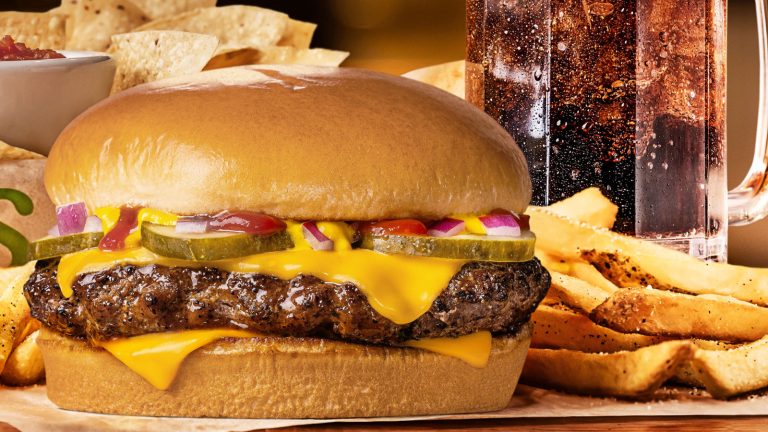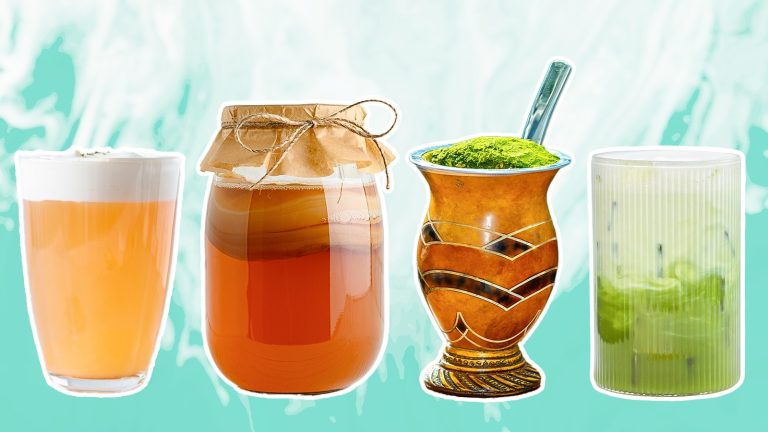Over the years, Coors Banquet fans have included all-time cool guys Dean Martin, Keith Richards, Clint Eastwood, and Paul Newman. Per the lore, Eisenhower and Ford even stocked it during flights on Air Force One. High demand for the once-illegal, unpasteurized beer led truck drivers to bootleg hundreds of cases of Coors Banquet “eastbound and down” — the real-life movement that inspired “Smokey and the Bandit” (1977). Long story short, Coors Banquet is kind of a big deal.
Coors Banquet is a lager (not to be confused with a pilsner), produced from yeast that’s bottom-fermented at cold temperatures. This processing leaves lagers with a crisp, clean, refreshing profile with low hops. A 5% ABV and an IBU of 15 give Banquet a relatively low bitterness and easy drinkability, clocking in brighter than many other domestic lagers, golden or otherwise (chalk it up to that Rocky Mountain spring water). On the palate, this dry, round, pale straw-colored lager presents a corn-forward taste with a damp, husky graininess. Surprising for its affordability, Coors Banquet boasts a quasi-craft beer profile with compellingly rich malt and fruity tones of pear and banana bread.
The Molson Coors website describes Coors Banquet as “a well-balanced, golden lager that Adolph Coors first brewed in 1873. Since then, Banquet has been brewed only in Golden, Colo., with Rocky Mountain water and Moravian barley.” The American lager comes in signature short, squat, 12-ounce bottles. Coors Banquet also comes canned, but for a true Banquet experience, we recommend leaving those cans for Coors Light.
Coors Banquet is a corn-forward lager with full-bodied dryness and a working class history
Back in 1873, the company currently known as Molson Coors was still called Schueler & Coors Golden Brewery. When its now-staple Golden Lager first hit the market, the brew found an eager fanbase in the nearby mining community of Clear Creek, Colorado. 19th-century mining was a dangerous and physically laborious trade, leading miners (often immigrant workers) to end the workday with a hearty meal of family-recipe foods from their country of origin and a pint of lager — hence the name “Banquet.”
Adolph Coors himself was a Prussian-born immigrant who came to the U.S. with no money at age 21. Before moving to Colorado, he landed in Baltimore, where he worked as a stonecutter, bricklayer, firefighter, and railroad laborer. The Golden Lager wouldn’t officially take on “The Banquet Beer” moniker until 1937 after Prohibition, a long-awaited nod to the brew’s working man’s roots. The brew has remained easy on the worker’s wallet, too. For example, at a Target in Chicago, a six-pack of Coors Banquet bottles costs under $10, and a 12-pack of cans goes for less than $15. This unchanging classic remains one of the most popular beer brands on the market. Adolph Coors nailed it on the first pass — and the signature stubby brown bottles offer a retro feel that honors Coors Banquet’s rich history.






